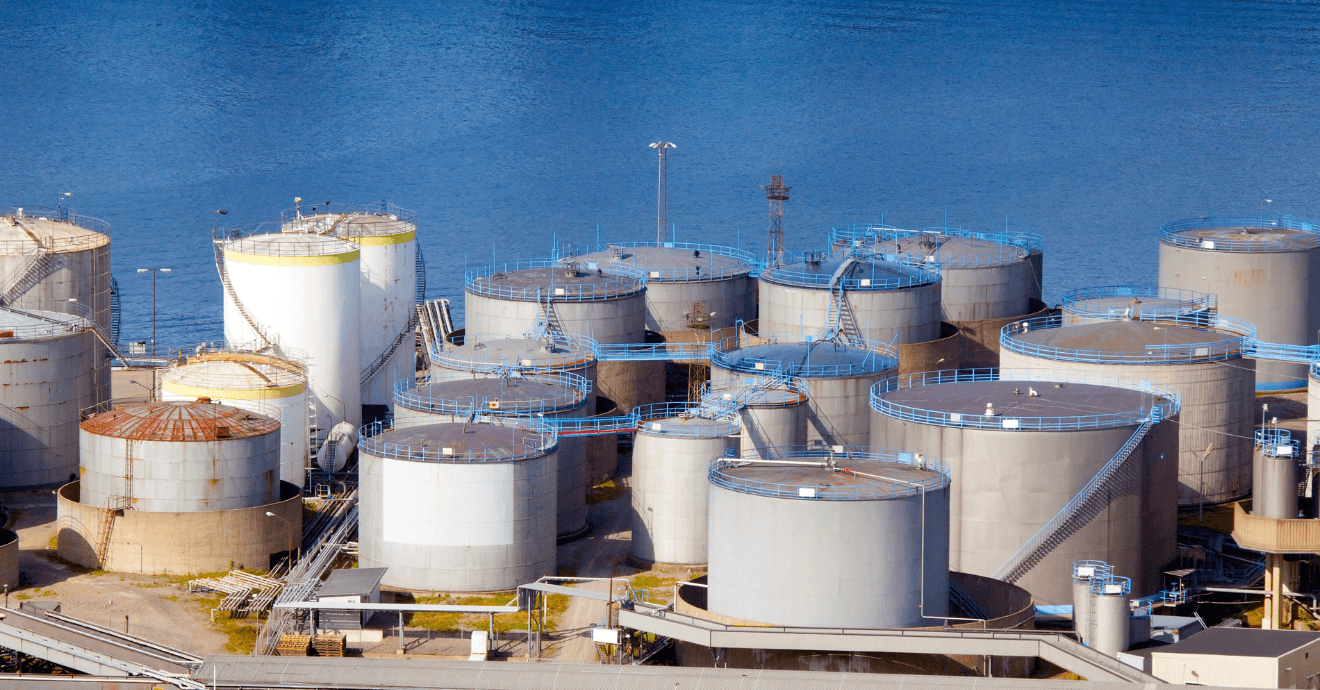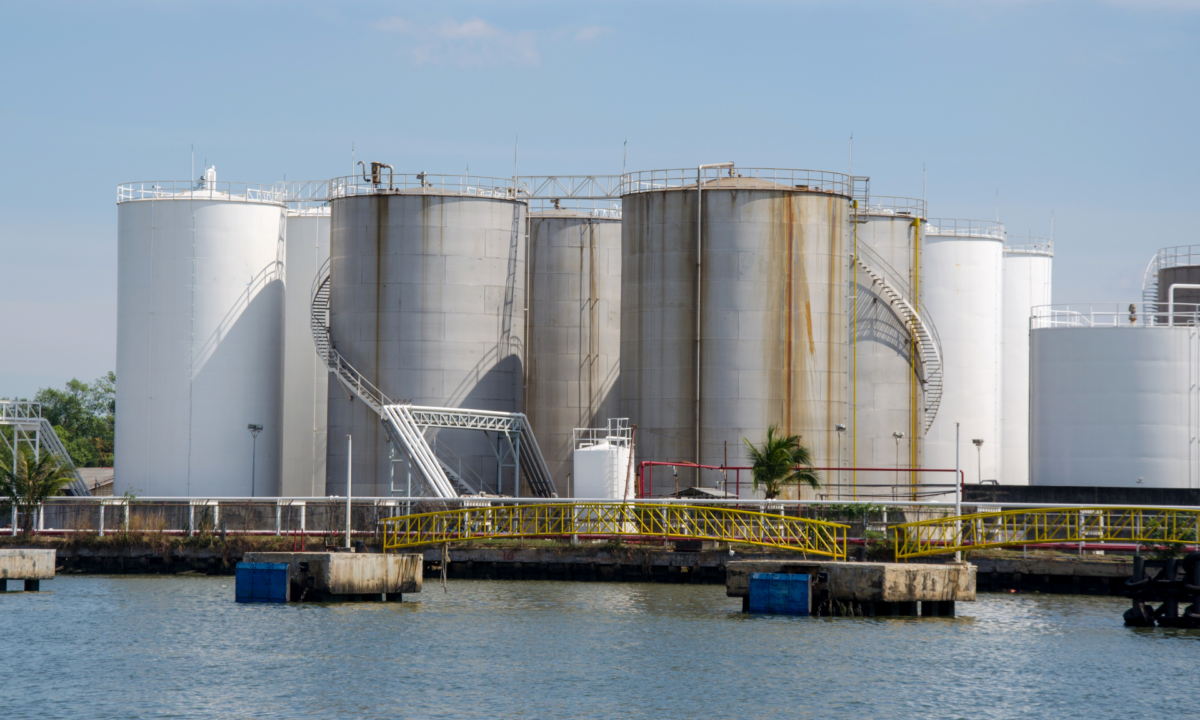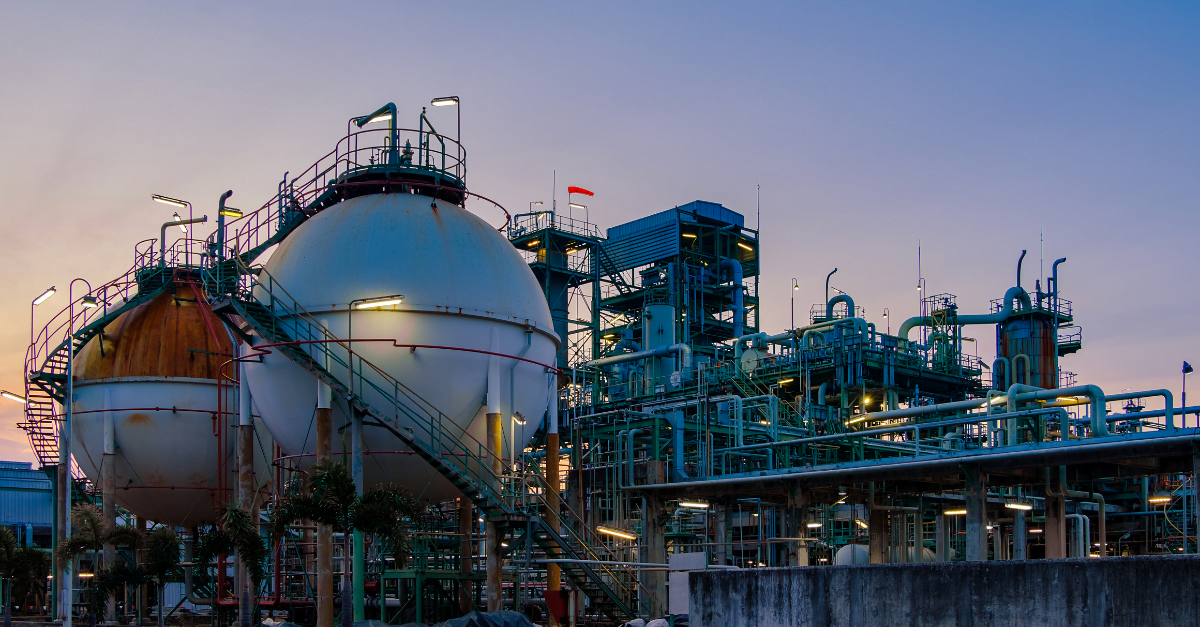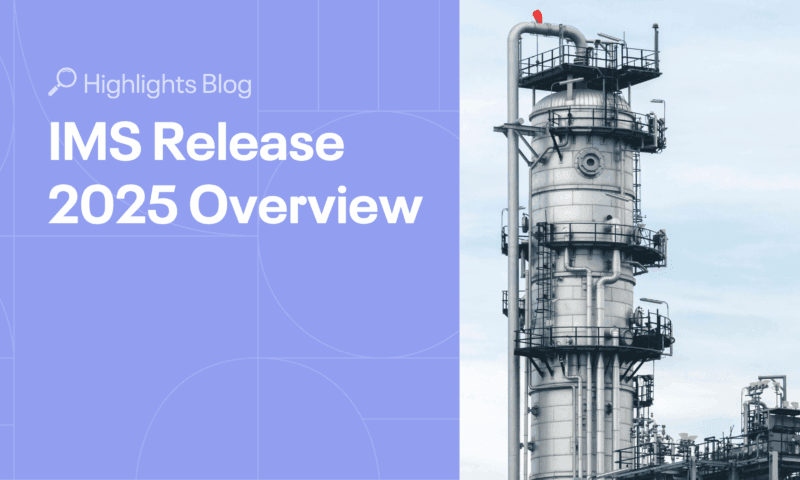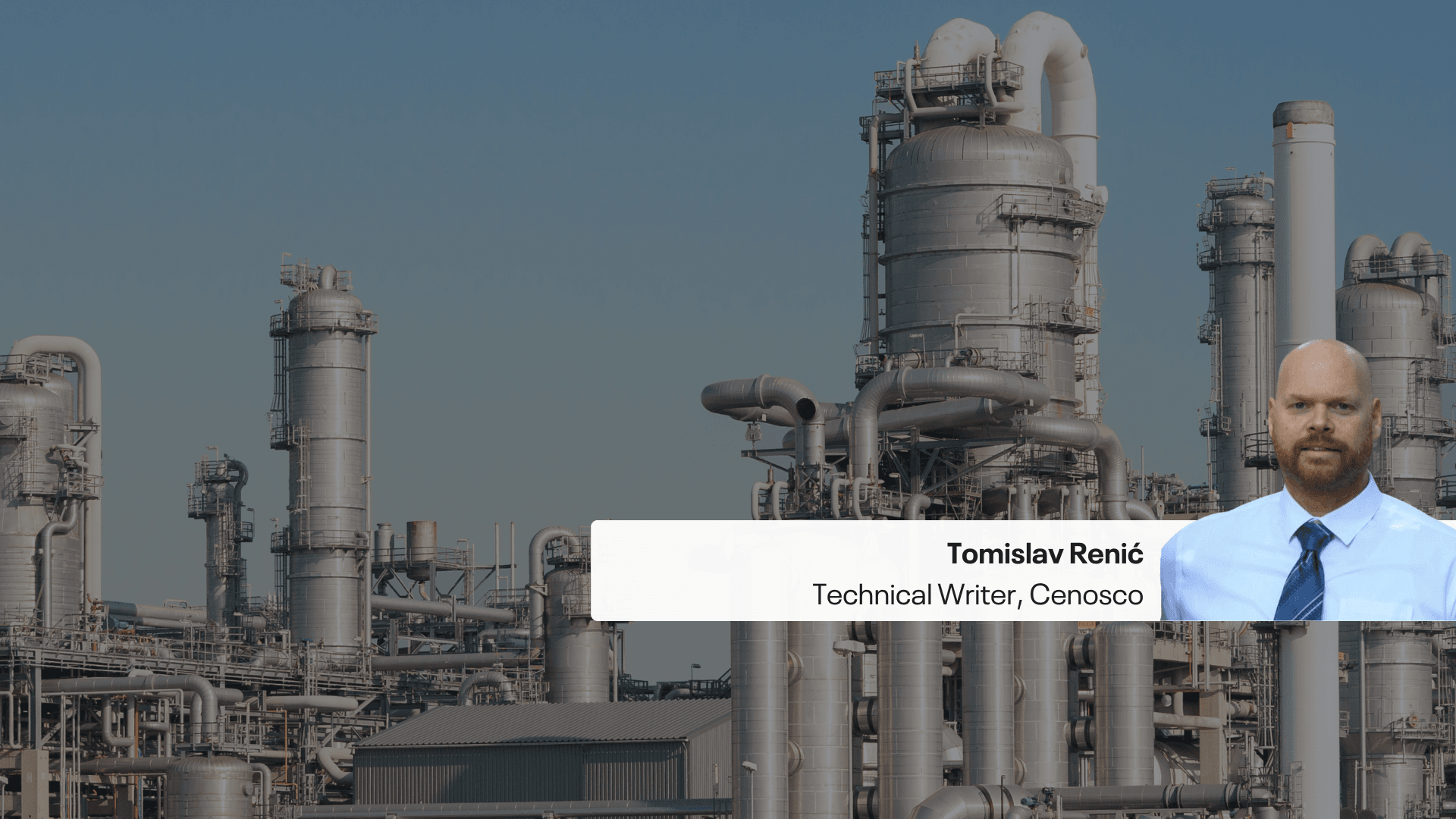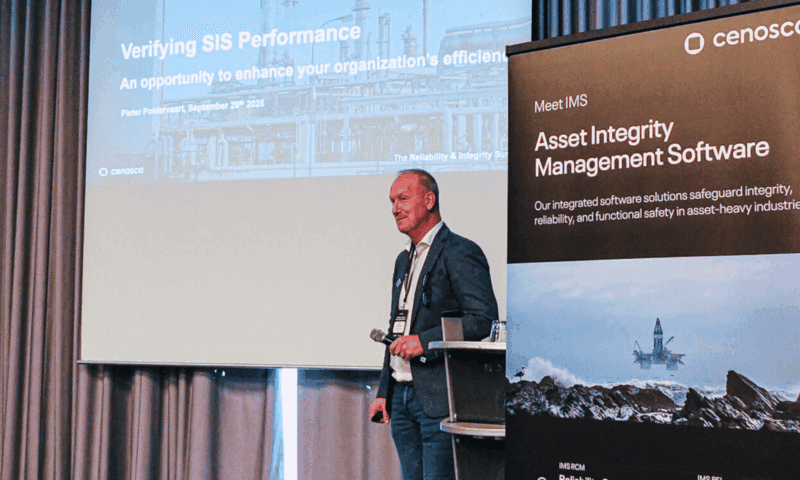Refineries play a critical role in the global energy supply, powering daily life and the industries around us. These crucial operations face growing challenges as they combat pressures of equipment degradation, heightened safety concerns, and stricter regulatory demands. The situation is particularly pressing for aging refineries, which means that many are operating with outdated infrastructure, increasing the risks of equipment failure, inefficiencies, and safety hazards, as a high percentage of operating refineries worldwide are now over 30 years old.
The big question is: How can refineries, regardless of their age, remain productive, safe, and competitive while navigating the complex challenges of maintenance, integrity, and operational reliability?
In this blog, we’ll explore the key challenges facing refineries, discuss actionable strategies to address them, and highlight how Cenosco’s IMS can help secure a sustainable and efficient future for refinery operations.
Aging Refinery Challenges & IMS Solutions to Overcome
Decades of continuous operation have left many refineries struggling to keep up with modern demands. Outdated control systems, equipment wear and tear, and process changes have emerged as challenges, resulting in higher maintenance costs and unplanned downtime, leading to reduced efficiency. For operators, this isn’t just a day-to-day challenge, it’s a long-term risk to the competitiveness and sustainability of their facilities.
Addressing the challenges related to aging refineries requires not only a clear understanding of the risks and their impact on operational performance but also the right tools to tackle them efficiently. The leading challenges faced in these operations include corrosion and other degradation mechanisms, adhering to stricter compliance and safety requirements and staying on-top of their reliability to prevent unplanned downtime.
While these challenges may become overwhelming for operators, the right software will not only facilitate addressing them but will provide further benefits. This is where Cenosco’s IMS Suite comes into play. While managing aging infrastructure may seem challenging, IMS provides a comprehensive suite of solutions to streamline operations, improve reliability, and maintain compliance. Explore these key challenges and how IMS solutions can help overcome them.
Corrosion and other Degradation Mechanisms in Aging Refineries
As refineries age, various degradation mechanisms impact their equipment integrity, reducing performance and increasing failure risks. These mechanisms include corrosion, erosion, thermal stress, and chemical degradation, all of which contribute to costly maintenance and operational downtime. Left unmanaged, these threats can compromise refinery reliability, leading to unplanned shutdowns, safety hazards, and regulatory non-compliance.
Among these challenges, Corrosion under insulation (CUI) is one of the most significant risks to refineries, often remaining hidden until severe damage occurs. This localized corrosion can degrade pipelines, pressure vessels, and heat exchangers due to moisture trapped under insulation materials. With corrosion costing industries in the USA over $276 billion annually – over 3% of the country’s GDP – addressing CUI is a key objective. Therefore, recognizing and managing CUI is not just an operational necessity; it’s a strategic imperative that can protect both your assets and your organization’s future.
Challenge
Degradation in aging refineries is driven by multiple factors, all of which compromise equipment integrity over time. Among these, Corrosion Under Insulation (CUI) stands out as a particularly severe and often undetected issue. The hidden nature of CUI makes detection difficult, increasing the likelihood of costly failures.
Operators must balance inspection efforts with limited resources — such as funding, personnel, and time — while ensuring critical assets remain operational. Traditional inspection methods often miss early-stage degradation, leading to unplanned downtime, increased maintenance costs, and heightened safety risks.
Solution
Effectively managing Corrosion Under Insulation (CUI) requires a structured and proactive approach. Given the complexity of accurately assessing CUI risks, having a system that guides operators through the process is essential. IMS PEI (Pressure Equipment Integrity) provides step-by-step support for conducting Risk-Based Inspection (RBI) analysis, considering factors such as degradation mechanisms, equipment and component type, and material properties to determine the most suitable approach.
To further improve CUI management, IMS PEI offers specialized tools, including a susceptibility to failure questionnaire, a CUI corrosion rate calculator, coating life estimation models, and criticality lookup tables based on both failure probability and potential consequences. Additionally, it helps define optimal inspection intervals and strategies based on asset risk profiles, ensuring inspections are both effective and resource-efficient.
The selection of the appropriate CUI RBI approach is influenced by component material and operating temperature, helping operators focus on high-risk areas while avoiding unnecessary maintenance efforts. In the same way, IMS PEI serves as a comprehensive decision-support system for all component-degradation mechanism combinations, allowing operators to confidently assess risks and optimize inspection and maintenance strategies without being overwhelmed by complexity.
By integrating these tools, refineries can transition from reactive maintenance to a more predictive and risk-based approach, ultimately improving asset reliability and reducing costly unplanned shutdowns.
Safety and Compliance in Aging Refineries
Stricter safety and environmental regulations are placing growing pressure on refineries to meet complex and frequently updated compliance requirements. Compliance failures can lead to legal penalties, reputational damage, or even complete operational shutdowns. For aging refineries, navigating these demands alongside the complexities of aging infrastructure is increasingly challenging.
Challenge
Operators are tasked not only with aligning to current safety and environmental standards but also with anticipating future regulatory changes. The decentralized and manual processes often used in compliance tracking create additional complexity, increasing the possibility of oversights. These challenges are intensified when resources – such as personnel, budgets, or tools – are stretched thin across multiple priorities.
Solution
IMS SIS (Safety Instrumented Systems): Enables HAZOP LOPA and SIF designs, ensuring a structured approach to process safety management. The system facilitates the creation and management of Safety Requirement Specifications (SRS reports), providing an overall record of safety instrumented functions.
One of its key strengths is the seamless synchronization of data between LOPA, HAZOP, and SIF designs, ensuring consistency and eliminating conflicts across safety assessments. By serving as a single source of truth, IMS SIS improves traceability, compliance, and risk reduction, helping operators maintain operational safety and regulatory alignment with confidence.
IMS PEI (Pressure Equipment Integrity): Helps ensure compliance by providing Risk-Based Inspection (RBI) and criticality assessments, optimizing inspection schedules based on risk-based modeling of equipment degradation. This reduces unnecessary inspections while ensuring safety and regulatory alignment.
IMS RCM (Reliability-Centered Maintenance): Supports compliance by enabling proactive maintenance strategies that reduce failures and unplanned downtime. Reliability-Centered Maintenance (RCM) analysis helps balance cost, risk, and performance, improving operational safety while meeting regulatory demands.
IMS Suite: Eliminate paper-based processes with digital checklists that streamline inspections and directly record data, avoiding costly manual transcription. IMS also integrates with CMMS and document management systems, ensuring seamless data flow and a secure audit trail for approvals, inspection results, and compliance reporting.
For asset-intensive industries, regulatory costs are unavoidable, but investing in IMS for asset integrity management significantly reduces compliance burdens while enhancing safety and efficiency.
Downtime and Reliability Issues in Aging Refineries
Aging equipment introduces significant risks of unplanned downtime, disrupting production schedules and causing financial losses. Such interruptions not only impact refinery performance but can also strain relationships with supply chain partners and customers. The financial implications are substantial, with the costs of unplanned shutdowns in the oil and gas industry estimated to range between $38 and $88 million USD annually on average. These figures underscore the critical need for effective strategies to minimize downtime and maintain operational stability.
Challenges
Operators must provide a delicate balance between ensuring asset reliability and managing maintenance costs. Reactive maintenance approaches often lead to excessive repairs and unexpected failures, while overly frequent maintenance results in wasted resources. Aging equipment amplifies these challenges, as wear and tear increase the possibility of component
IMS Solution
A well-structured maintenance strategy ensures that resources are allocated efficiently, balancing cost, risk, and reliability. It provides quantifiable risk reduction data, helping organizations assess the value of preventive maintenance while optimizing planning and budgeting. Additionally, by proactively managing safety, environmental, and operational risks, it reduces failures, prevents leaks, and iimproves long-term sustainability.
IMS RCM (Reliability-Centered Maintenance) enables operators to apply these principles by prioritizing maintenance based on actual risk, ensuring critical assets receive attention first while avoiding unnecessary maintenance. By leveraging data-driven insights, IMS RCM helps refineries transition from a reactive approach to a strategic, risk-based maintenance plan, reducing downtime, extending asset life, and improving overall efficiency.
Inspection Inefficiencies in Aging Refineries
Aging refineries must inspect thousands of assets, but limited resources make it crucial to focus on the right ones at the right time. Without a structured approach, operators may spend time on low-risk equipment while critical assets remain overlooked, increasing the potential for failures and unplanned downtime.
Challenges
Operators face difficulties in prioritizing inspections. As a result, vulnerabilities in high-risk areas may go unnoticed, while resources are spent inspecting low-risk assets. The lack of integration between inspection and maintenance schedules further exacerbates inefficiencies, leading to costly delays and misaligned priorities.
Solution
IMS PEI (Pressure Equipment Integrity) enables refineries to prioritize inspections based on risk, ensuring that critical assets receive attention first while lower-risk equipment is assigned appropriate inspection intervals. The Risk-Based Inspection (RBI) framework in IMS PEI assesses failure probability, degradation mechanisms, and potential consequences, helping operators allocate inspection resources where they matter most.
By leveraging risk-based modeling, IMS PEI helps refineries shift from a fixed-schedule approach to a data-driven strategy, reducing unnecessary inspections while minimizing the risk of unexpected failures. This ensures better inspection efficiency, optimized maintenance costs, and improved asset reliability.
Additionally, Dynamic Form Checklists within IMS PEI streamline inspection workflows, ensuring consistency and accuracy when assessing equipment conditions. These checklists, along with IMS PEI’s functionalities, can be seamlessly utilized in the field through IMS4Field, allowing operators to capture real-time inspection data and make informed decisions on-site.
Despite the increasing challenges faced by aging refineries—such as corrosion, compliance risks, downtime, and inspection inefficiencies—solutions like Cenosco’s IMS Suite can help you tackle these issues effectively. By leveraging IMS, refineries can streamline operations, improve reliability, and maintain compliance, all while ensuring long-term asset integrity. Managing aging infrastructure becomes more manageable and efficient with the right tools in place.
Real-World Impact of IMS
Refineries leveraging IMS have achieved remarkable results:
- 25% Reduction in Downtime: Proactive maintenance strategies minimize failures and unplanned shutdowns, ensuring stable and efficient operations.
- 30% Lower Regulatory Penalties: Simplified compliance tracking ensures adherence to stringent standards.
- 40% Faster Inspections: Risk-based strategies focus on high-priority areas, saving time and resources.
More than 50% of the world’s refineries are over 30 years old, creating challenges for operators worldwide. It’s time to future-proof your operations.
Are you ready to transform
how you manage your refinery assets?
Fill out the form below and we’ll be in touch with you shortly to get you started with a demo of IMS.
